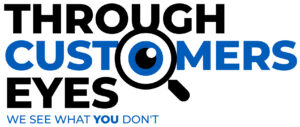To help you have assurance that your frontline staff are providing your customers with excellent customer service, you must first determine if they are and where the gaps are.
There are several actions that can be taken which will indicate as to whether and what training needs to be implemented.
Customer Feedback
Use surveys, online reviews, or communicate directly with your customers.
What are they saying?
Are there any patterns, or repeated complaints associated with the quality of service given to them?
Are they constantly reporting the challenges they face relating to the service?
This is a good indicator that training may be needed.
Undercover customer visits
Use professional third-party companies like mystery shoppers to carry out undercover customer visits. They are trained to act as customers and assess the service they receive objectively.
What are the experiences they are having as the undercover customer?
Has it been poor, average, or excellent?
Are your staff working towards your success, or against it?
Their feedback will give very valuable insights into identifying what and where training must be implemented.
Customer complaints
Are your customers complaining or enquiring?
What are the complaints or enquiries?
Examine the kinds of topics that they are mentioning.
Similar or frequent grumbles about customer service may be an indicator that something needs to improve.
Staff member self-evaluation
Motivate staff members to self-evaluate their customer service skills to determine the areas where they feel less confident in.
This will give them insight into their own training requirements.
Supervisor feedback
Supervisors or managers responsible for customer service staff members can give valuable feedback.
They understand their team’s strengths and weaknesses.
Performance metrics
Key Performance indicators (KPIs) associated with customer service can signify a need for training.
Your business may have specific metrics that need to be measured.
Professional undercover customers like secret shoppers can identify these areas to determine if these metrics are or are not meeting the expectations of the business.
Role-Playing or Mock-ups
Carry out role-playing exercises or mock-ups to detect how staff members go about various customer scenarios.
Gaps in their communication or problem-solving skills may be identified.
Benchmarking
How does your business’s customer service performance compare with industry standards or your competitors?
If your service is falling behind, this might be an indicator that improvement needs to take place.
Regular training needs evaluation
If regular staff training is being conducted, regular assessments to evaluate whether that training is effective or not needs to be done. Again, you can use mystery customers. This will help identify any gaps in the training.
Conduct staff surveys, one-on-one discussions, or staff performance reviews.
Employee Turnover
High employee turnover in frontline roles can also be an indication that there is either dissatisfaction or skills absence in those roles. To overcome this, training can be implemented which will improve the work atmosphere.
Products or services variations
Your business may bring in new products or services, or policies, therefore, customer service staff may need to upskill to be efficient and effectively communicate these changes to customers.
Competitor benchmarking
Examine how your competitors handle customer service.
Are they consistently outdoing your business?
This may also demonstrate that your staff needs training to meet or exceed industry standards.
Once training needs have been determined, a targeted training program can be developed to focus on improving those specific areas.
Training can be in the areas of customer service, communication techniques, conflict resolution, empathy, and product knowledge along with other related topics.
The effectiveness of the training must be regularly assessed, and this can be carried out with follow up evaluations, ongoing feedback from staff and customers and undercover customer visits to identify if any gaps still exist.

